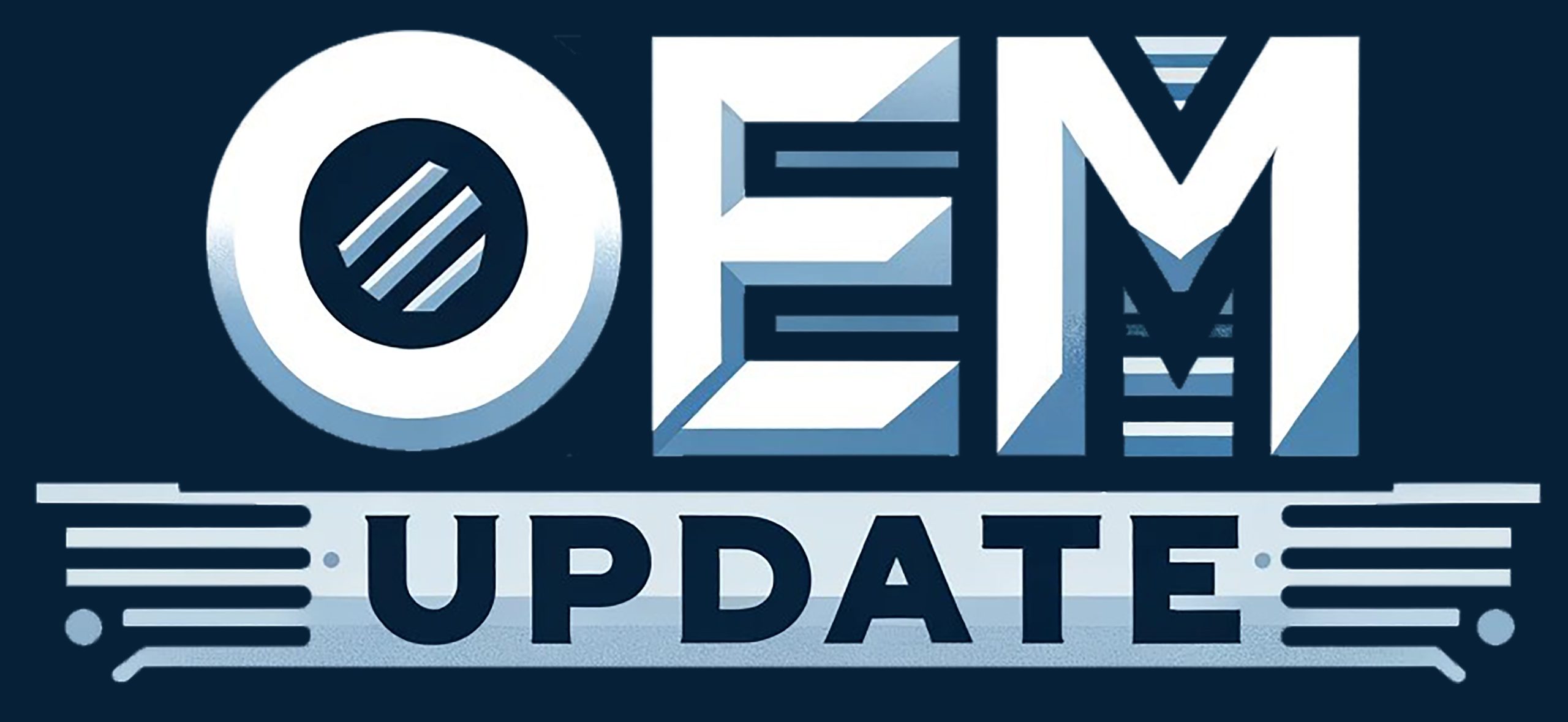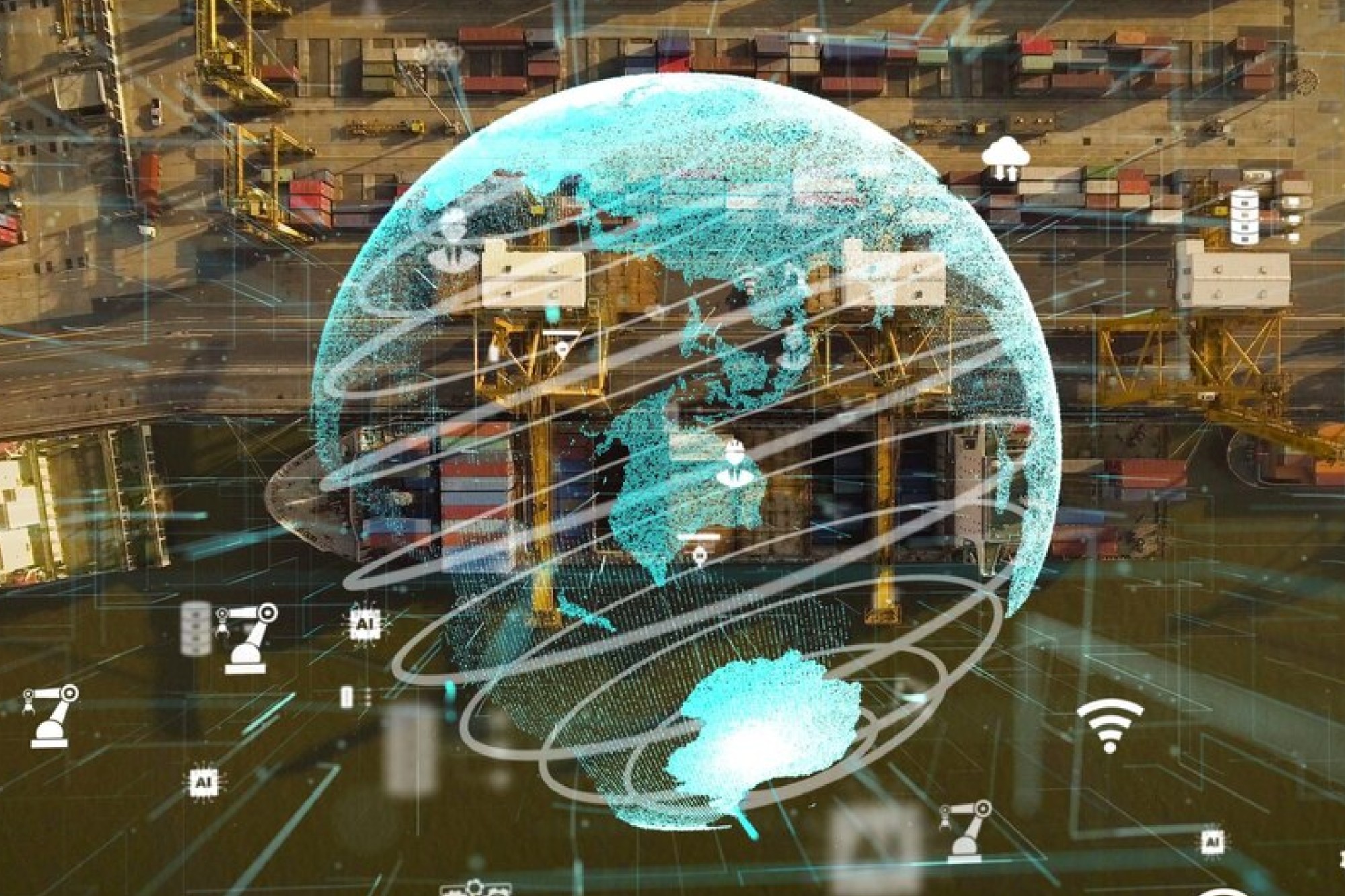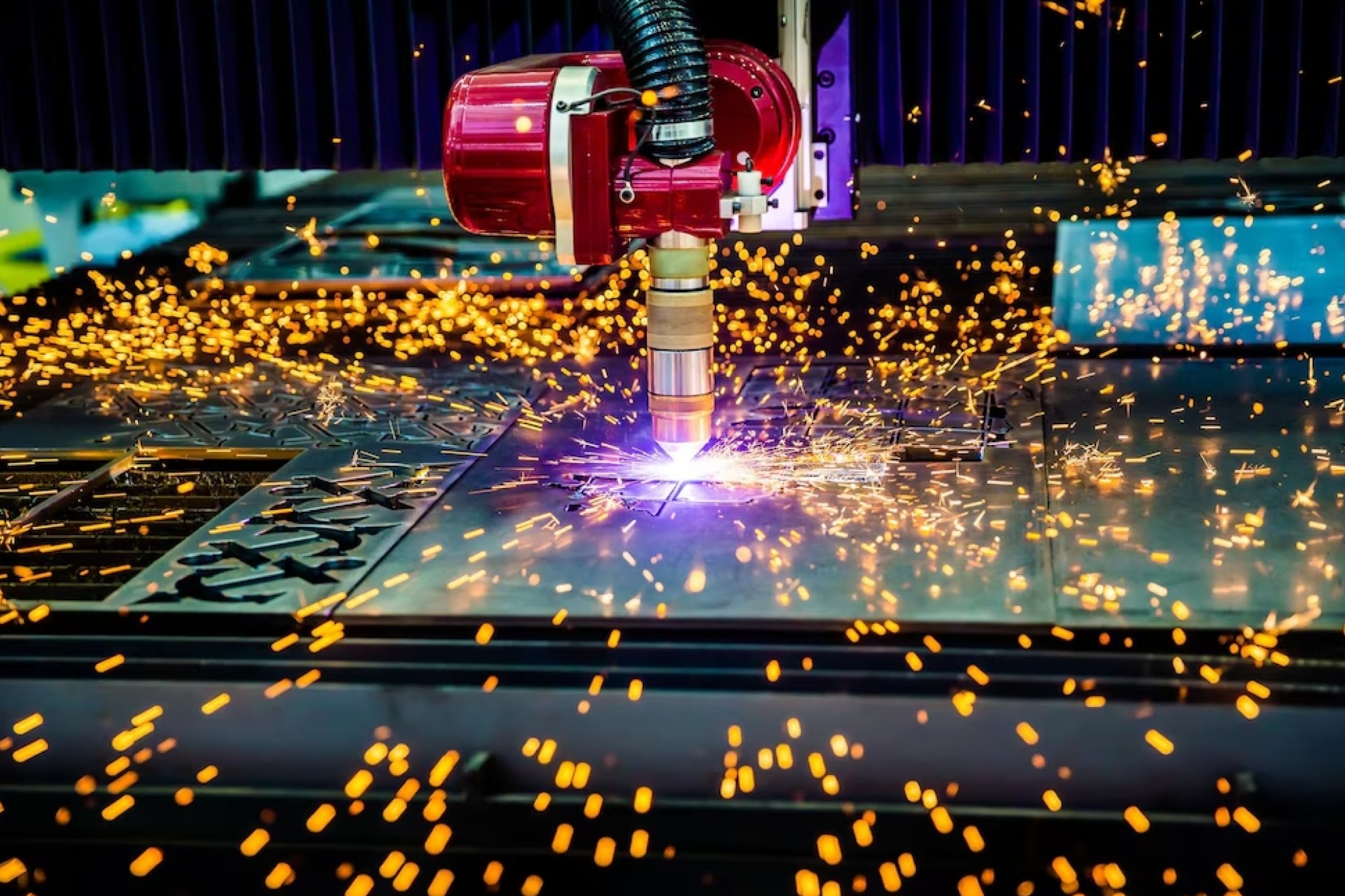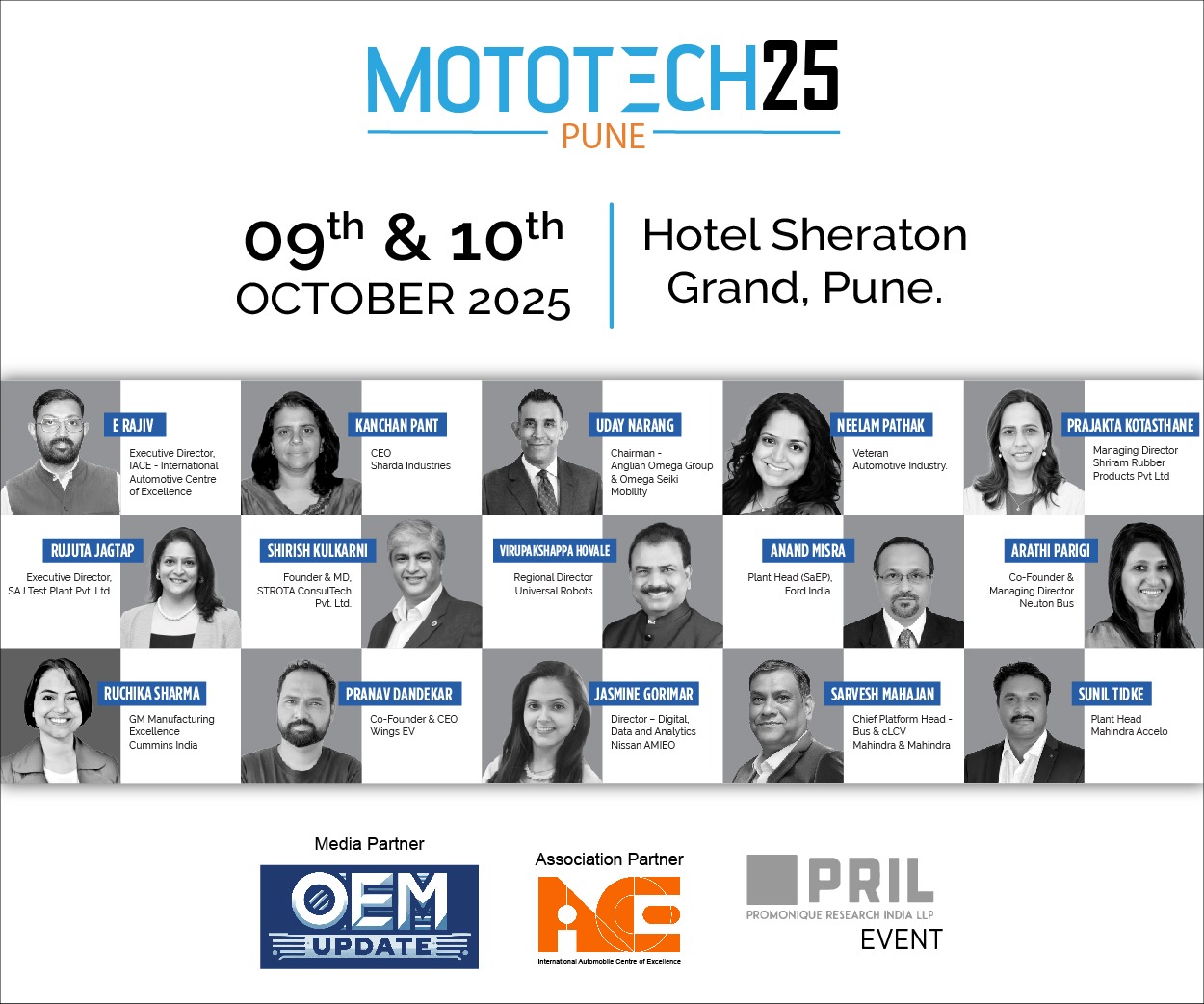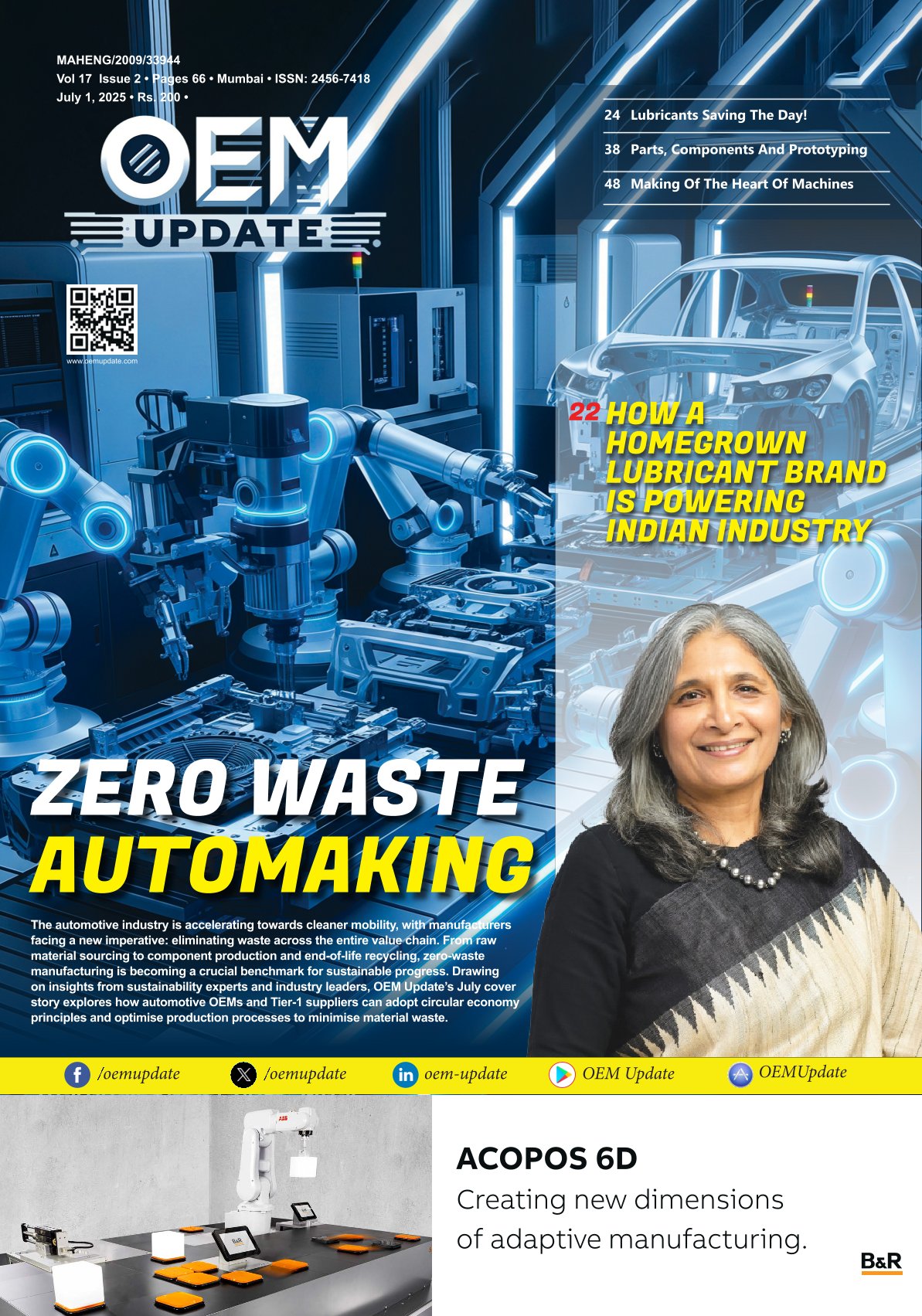One World, One Market – The Global OEMs
By Staff Report June 5, 2025 6:45 pm IST
The idea of a single global market has evolved over centuries, from ancient trade routes to today’s digitally connected supply chains. The yearning for knowledge and the drive for better nations bridged borders, leading to trade liberalisation and collaboration among various industries. The interconnected world has provided opportunities for all countries to access innovations produced in one location and elevate them for the entire world.
OEM Update’s Anniversary edition explores the theme of One World, One Market, with experts guiding manufacturers on the path to creating borderless factories—where ideas, components, and capabilities flow seamlessly across geographies to shape the products of tomorrow.
While printing technology had already flourished in ancient China and Korea, with movable type developed centuries before, Johannes Gutenberg’s invention of the mechanical movable-type printing press in 15th-century Germany marked a turning point for the modern world. It wasn’t the first printing press in history, but it was the first to combine mass production principles with mechanical precision in the West. Here, the basic principle came from the innovation happening around the globe. Gutenberg’s press sparked an era of rapid knowledge dissemination and easy access to information, igniting industrial thinking long before the Industrial Revolution. Fast forward to today, and a parallel transformation is happening, this time in the manufacturing sector. Today, designs are conceptualised in Silicon Valley, prototyped in Pune, assembled in Vietnam, and delivered across continents. Manufacturing is no longer a local endeavour; it is a global synchrony.
Industrialists with manufacturing around the world share how they have adopted the borderless factory model to build smarter and faster global operations. They believe this shift could represent manufacturing’s biggest revolution since the introduction of the assembly line.
Role of Technology
Technology plays a critical role in every department. It drives business and, in the context of borderless manufacturing, enables effective cross-regional collaboration.
Guruprasad Tantry, Director of Chennai Plant at Webasto Roofsystems India Pvt Ltd, shares his view, citing, “One of the primary uses of technology should be for knowledge transfer. When we talk about borderless factories and grasping the advantages of one location, new facilities must have the best knowledge from their parent or legacy factories.”
Technology also supports process and product know-how across regions. A prime example is the digital thread, also known as a digital twin. The digital thread is a communication framework that integrates data across the entire product lifecycle. This framework enables data-driven decision-making and collaboration among global teams, tracking changes in product design, production processes, deployment, and application usage.
People can query the digital thread to pull relevant information. For example, with Microsoft Copilot, you can input a question and retrieve data from across the digital thread—accessible globally without needing someone in another time zone to respond. This is how digital threads can be a powerful technology for managing borderless supply chains and manufacturing.
Secondly, AI tools also support knowledge transfer, along with digital platforms that enable faster responses and quicker problem-solving—vital in today’s fast-paced world.
Regulations
BIS (Bureau of Indian Standards) regulations in the manufacturing industry are primarily focused on ensuring the quality, safety, and reliability of products. Considering the broader perspective, BIS regulations impact material imports, which can pose significant challenges for global companies sourcing from multiple countries.
Manojit Acharya, Vice President – Asia Pacific and Managing Director – India at Jungheinrich, states that the QoS (Quality of Service) regulations issued by BIS impact various components in procuring spare parts, as well as complete products or equipment. For a borderless supply chain, companies have moved increasingly toward this model over the decades. China played a significant role in supply chains, initially driven by cost and technology considerations. BIS regulations are even more challenging for goods sourced from China, although they are difficult across the board.
Sharing an experience at Jungheinrich, Mr Acharya says, “We’re dealing with issues around spare parts. The process of reaching the final supplier and obtaining necessary approvals is complex. Small suppliers in China and Europe may be hesitant to share their certifications. They cite concerns about intellectual property; manufacturing processes and technologies are proprietary. Some also raise concerns about data protection and the GDPR (General Data Protection Regulation). For companies like ours and most international companies operating in India, these regulations present significant roadblocks. I understand the government’s intent—to localise supply chains and encourage domestic manufacturing, but in the short term, it’s a major hurdle. Authorities need to understand that localisation can’t happen overnight.”
Rapidly localising all components or setting up factories has implications for customers as well. Mr. Acharya adds, “It’s not simply a matter of time or cost; although India is considered a low-cost manufacturing country, achieving true economies of scale requires ongoing effort. We must think beyond just local-for-local or made-for-India production to make it truly effective. From our customers’ perspective, if we can’t deliver the product, it also impacts their operations. Our mission is to help customers fulfil their commitments. This move, although well-intentioned, may be contrary to the principles of global trade. Other countries are also following suit, and it’s not the best trend. Many high-tech applications are not manufactured in India and are not exposed to India. In our industry, there are certain high-reach truck models that no one manufactures in India.”
Rajesh Nath, Managing Director, VDMA India, shared the relevance of organisations like ISO and IEC, as well as proactive government agencies, who are the silent architects of seamless global manufacturing. By developing and promoting universal standards, they enable OEMs across borders to communicate in a common technical language, ensuring quality, safety, and interoperability, regardless of geographical location.
In an interconnected manufacturing world, harmonised standards act as accelerators. They reduce compliance complexities, ease market entry, and foster innovation by allowing global players to build on a shared foundation. For emerging manufacturing hubs like India, alignment with global norms helps position the country as a reliable partner in the international supply chain.
Moreover, these organisations must now move faster and be more collaborative, working closely with industries to develop standards that keep pace with emerging technologies such as AI, additive manufacturing, and green production. Standard-setting bodies and policymakers shape competitiveness. Their evolving role is central to a truly “One World, One Market” manufacturing reality.
Local sourcing amid globalisation
The global versus local distinction is a critical and challenging aspect of the issue. It’s about localisation and skills. Finding the right supplier base is key. Localisation is important, especially with OEMs pushing for 100% local content—particularly if supplying EVs, where the focus is on getting the PLI scheme, and localisation becomes critical. However, local suppliers are not always equipped to handle the complexity of these products.
Mr. Tantry shares an example: a sunroof is a very complex system; even a simple one has approximately 60 components, including plastic, rubber, aluminium, steel, glass, electronics, and motors. Some commodities can only be localised at scale, like motors, which suppliers produce only if volumes reach a few million identical units. Sometimes, sub-assemblies must be imported if local production isn’t feasible.
It’s very challenging but possible through standardising core operations and customising products where scale allows localisation. Building an ecosystem of suppliers around you is crucial for effective localisation. It is evident that, even after accounting for import duties, some imported components can be cheaper than those sourced locally due to the lack of a local ecosystem.
It’s a combination of local and global sourcing. The local team also needs empowerment to make decisions on what to localise based on regulations, sustainability, or other reasons.
Resilient Supply Chain
From a global perspective, when your supply chain spans multiple countries, it’s no longer just about managing transport. You’re dealing with different time zones, customs regulations, infrastructure standards, and modes of transport. This results in longer and less predictable lead times, increased coordination among carriers, and a higher risk of disruptions from port strikes, weather, or political unrest. There are constant fluctuations in costs, including fuel prices, container shortages, and added surcharges. At the same time, there’s mounting pressure to reduce carbon emissions. Companies must now rethink their entire transportation strategy, as sustainability has become a matter of compliance and brand reputation.
Another major shift is the need for real-time visibility. You can’t manage what you can’t see. That’s why companies are investing in tracking systems, predictive analytics, and AI tools to monitor shipments and proactively manage any issues that may arise.
Then there’s the inventory challenge. With longer lead times and increased unpredictability, companies must decide whether to hold more inventory near customers or risk lower inventory levels and faster restocking. It’s a tough balance.
To give a quick example, Mathias Schmalz, Managing Director, PRG Agitators Pvt Ltd, shares, “At PRG, we source critical components from Europe, assemble them in India, and then ship them to clients across the Middle East and Asia. A delay at a European port or a customs issue in the UAE can disrupt the entire schedule. Since our products are custom-built, we can’t just substitute parts or reroute shipments. That’s why we’ve adapted by building stronger relationships with freight partners and more flexibility in our planning. We’re also exploring smarter logistics solutions to manage compliance and reduce environmental impact. In short, logistics in a borderless supply chain directly affects cost, customer satisfaction, and business continuity.”
While commending the entire world as a single market, you’re not just moving goods but working across cultures, time zones, and communication styles. Mismanagement can cause even the best logistics plans to fail. Different cultures have varying expectations, work habits, and communication norms. Direct and efficient in one culture may seem blunt or rude in another. Even simple things, such as how feedback or silence is interpreted, can cause misunderstandings.
Time zone differences delay communication and slow operations. Digital tools like email, chats, and video calls are helpful, but they also increase the room for misinterpretation if the tone and urgency aren’t clear. Managing this requires cross-cultural training, clear documentation, and collaboration platforms that support real-time and asynchronous communication. Tools like Microsoft Teams, Zoom, SharePoint, Trello, and AI translators (such as DeepL and Microsoft Translator) help bridge language and cultural gaps.
Skill development
Everyone comes from a different background; some have engineering experience, others don’t, so training is essential. Training at all levels is an effective solution: shop floor operators utilise digital simulations and mock-ups; middle management undergoes integrated learning programmes, often customised for large groups; and leadership development occurs through mentoring. Experienced mentors can pass on legacy knowledge and leadership styles to new generations.
Cultural and working-style differences across countries can have significant implications. Understanding what motivates people from different regions is key, especially from a leadership perspective. Today, it’s not just about cross-functional teams but truly cross-cultural teams, bringing together diverse people from different time zones and nationalities. Recognising each person’s strengths helps build effective teams despite time constraints.
——————————————————————————————————–
Quotes
Manojit Acharya, Vice President – Asia Pacific, Managing Director – India, Jungheinrich
Borderless factories are driven by the need for economies of scale and global competitiveness. Setting up a factory in every country isn’t viable—it’s the model itself that enables cost efficiency and access to resources.
Mathias Schmalz, Managing Director, PRG Agitators Pvt Ltd
Supply chain and logistics isn’t just about moving goods—it’s a strategic function that determines cost, delivery, and business continuity. A flawless supply chain network is the only route to make the entire world a market.
Guruprasad Tantry, Director – Plant Chennai, Webasto Roofsystems India Pvt Ltd
Digital threads and AI tools allow seamless knowledge transfer across locations—this is what truly enables the success of borderless trade and leads to a global market space.
Rajesh Nath, Managing Director, VDMA India
In the hyperconnected manufacturing environment, the concept of ‘One World, One Market’ is operational. OEMs are engineering products across continents, leveraging globally harmonised standards, integrated digital supply chains, and multi-origin sourcing strategies to optimise performance, cost, and speed. The future belongs to those who can innovate collaboratively and operate seamlessly across borders.
Cookie Consent
We use cookies to personalize your experience. By continuing to visit this website you agree to our Terms & Conditions, Privacy Policy and Cookie Policy.
